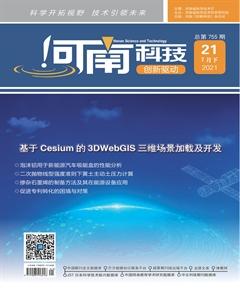油浸式电流互感器的基本结构与介损试验重点
林忠立



摘 要:在电力系统中,电流互感器将大电流转换为一定比例的小电流,起到测量电流、自动控制和继电保护的作用。作为重要的变电设备之一,电流互感器按照绝缘介质可分为干式、浇注式、油浸式和气体绝缘式。油浸式电流互感器制造成本较低,在35~500 kV等級变电站内使用广泛。随着设备投运年限的增长,油浸式电流互感器故障率也显著提升。电容量及介质损耗试验作为一种检测容性设备绝缘状态的试验方法,针对不同结构的油浸式电流互感器也有不同的试验要点。本文对油浸式电流互感器的基本结构进行阐述,并针对性提出介损试验重点。
关键词:介损试验;油浸式电流互感器;正立式电流互感器;倒立式电流互感器
中图分类号:TM452.94 文献标识码:A 文章编号:1003-5168(2021)21-0040-05
The Basic Structure of Oil-immersed Current Transformer and the Key Points of Dielectric Loss Test
LIN Zhongli
(State Grid Fujian Electric Power Co., Ltd Maintenance Branch Company, Fuzhou Fujian 350000)
Abstract: In the power system, a current transformer converts a large current into a certain proportion of a small current, which plays a role in current measurement, automatic control and relay protection. As one of the important substation equipment, current transformers can be divided into dry type, pouring type, oil-immersed type and gas-insulated type according to the insulating medium. Oil-immersed current transformers have low manufacturing costs and are widely used in 35~500 kV substations. With the increase in the operating life of the equipment, the failure rate of oil-immersed current transformers has also increased significantly. The capacitance and dielectric loss test is a test method for detecting the insulation state of capacitive equipment. There are also different test points for oil-immersed current transformers of different structures. This article describes the basic structure of the oil-immersed cur- rent transformer, and puts forward the key points of the dielectric loss test.
Keywords: dielectric loss test; oil-immersed current transformer; upright current transformer; inverted current trans- former
1 前言
电流互感器的原理与变压器基本相同,与线路串联的一次绕组匝数较少,与继电保护装置相连的二次绕组匝数较多,一次负荷电流通过一次绕组时,产生的交变磁通感应产生按比例减小的二次电流。油浸式电流互感器发展历史较长,种类较多,广泛应用于35~500 kV等级变电站。油浸式电流互感器结构较为复杂,油浸式电流互感器主要由油箱、储油柜及膨胀器、变压器油、一、二次绕组及端子、瓷套、器身等组成。电流互感器按主绝缘结构不同,可以分为纯油纸绝缘的链形结构和油纸绝缘电容式结构两种。电流互感器绕组绝缘结构不同,造成对其电容量及介质损耗试验(下称介损)时侧重点也不一样。
2 链形结构电流互感器
2.1 结构特点
链形结构电流互感器主要应用在66 kV及以下电压等级,其一、二次绕组分别由绝缘皱纹纸包扎后形成吊环螺栓结构,并浸入在变压器油中,其产品外观见图1,内部绕组结构见图2。
2.2 介损试验重点
链形结构电流互感器现场介损试验通常使用反接法进行测试。因没有电容屏绝缘结构,一、二次绕组之间和对地电容较小,采用反接线时,对电容较小的试品高压电极及引线对地寄生电容影响较大。介损试验采用反接法可以得到电流互感器一次对二次及地的绝缘状况,但需注意套管内外壁和绝缘支架的绝缘状况对测试结果的影响。当测试介损值超出规定范围或与上一次测试值产生较大变化时,应将电流互感器的一次引线拆除,使用高压屏蔽等方法减少引线对地电容和瓷瓶表面泄漏电流的影响。必要时,可以将电流互感器拆卸到变电站外无带电设备干扰的地方进行诊断性测试。
链形结构电流互感器也可以使用正接法进行介损测试,此时对地寄生电容影响小,但只适用于电流互感器一、二次间绝缘测量和判断,无法准确判断对地绝缘的状态。在测量时,一次短接后接高压,二次短接后接介损仪Cx端,电流互感器外壳接地。

